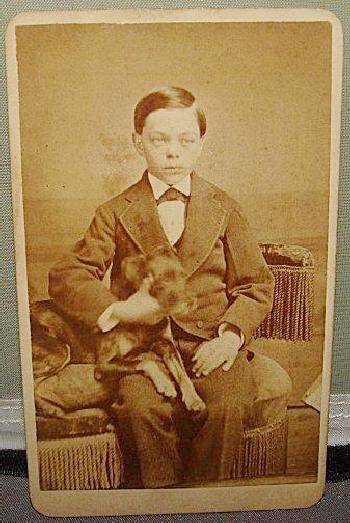
Figure 1.--This Richmond boy had a CDV portrait taken in 1874. Notice that there is no printing at the bottom front. The studio information was printed in orange on the back. The boy was Bernard Dogswell. |

|
Most of the cards in our collection are American CDVs. American CDVs, however, can be misleading. The CDV in the United States had a relatively short life. They appeared in the early 1860s and were the dominanyt format in the 1860s. The cabinet card was not introduced untill 1866. Thus most photographic portraits in the 1869serre CDVs. There were some Dags and Ambros in the early 60s and some cabinet cards in the late 60s, but the great bulk of portraits taken in the 1860s were CDVs. The portraits taken in the 1860s are very destinctive. The subject is usually posed standing up in what seems like aarge empty room. He are she fills up only a small part of the frame and the impression one gets is that he or she is some distance from the photographer. Early CDVs were basically blank except the portrait. Gradually printing identifying the studio appeared in at the bottom and/or back of the card.
The inirial printing was basic, even stamped on. An added feature of the 1860s mounts were the Federal Revenue stamps affixed to the backs of northern cards (1864-66). By the end of the decade the printing on the back was increasingly elsborate. CDVs in America were largely, but not entirely replaced by cabinet cards in the 1870s. Most 1870s cards had printing at the bottom and back, but we still see some without printing at the bottom. We see more artful, intimate images with elaborate backdrops in the 1870s. We still see American CDVs into the 1880s, but by the 1890s they are increasingly rare.
Most of the cards in our collection are American CDVs. American CDVs, however, can be misleading. The CDV in the United States had a relatively short life. They appeared in the early 1860s and were the dominanyt format in the 1860s. The cabinet card was not introduced untill 1866. Thus most photographic portraits in the 1869serre CDVs. There were some Dags and Ambros in the early 60s and some cabinet cards in the late 60s, but the great bulk of portraits taken in the 1860s were CDVs. The portraits taken in the 1860s are very destinctive. The subject is usually posed standing up in what seems like aarge empty room. He are she fills up only a small part of the frame and the impression one gets is that he or she is some distance from the photographer. Early CDVs were basically blank except the portrait. Gradually printing identifying the studio appeared in at the bottom and/or back of the card.
The inirial printing was basic, even stamped on. An added feature of the 1860s mounts were the Federal Revenue stamps affixed to the backs of northern cards (1864-66). By the end of the decade the printing on the back was increasingly elsborate.
CDVs in America were largely, but not entirely replaced by cabinet cards in the 1870s. Most 1870s cards had printing at the bottom and back, but we still see some without printing at the bottom. We see more artful, intimate images with elaborate backdrops in the 1870s. We still see American CDVs into the 1880s, but by the 1890s they are increasingly rare.
Major differences developed between photography in American and Europe concerning photographic portraits. The cabinet card became the dominant portrait format in America during the 1870s and became even less common in the 1880s. . We still see some CDVs in America during the 80s. A good example is Henry Gates Hayes in Dover, New Hampshire (figure 1). Quite a few of the CDVs we find cane from New England. Another example is Jesse Bell in 1884 on the previous page. CDVs although not rare in the American photographic record, were much less common than cabinet cards. Assessing prevalence, however, is complicated by the fact that so few CDVs are dated. While not very common in America, CDVs were still common in Europe. Cabinet cards did not largely replace the CDV as was the case in America. We are not sure why this very apparent disparity developed. Some possible reasons occur to us. Increasing American affluence may be a factor. Cabinet cards were a little more expensive. Perhaps more conservative European society was slower to change. But in fact we have no real idea concerning this difference.
Navigate the Boys' Historical Clothing Web Site:
[Return to:Main CDV counry mount page]
[Return to:Main CDV mount page]
[Return to:Main cabinent card mount page]
[Introduction]
[Activities]
[Biographies]
[Chronology]
[Clothing styles]
[Countries]
[Bibliographies]
[Contributions]
[FAQs]
[Glossaries]
[Images]
[Links]
[Registration]
[Tools]
[Boys' Clothing Home]
Navigate the Boys' Historical Clothing Web Site:
[Sailor suits]
[Sailor hats]
[Buster Brown suits]
[Eton suits]
[Rompers]
[Tunics]
[Smocks]
[Pinafores]
